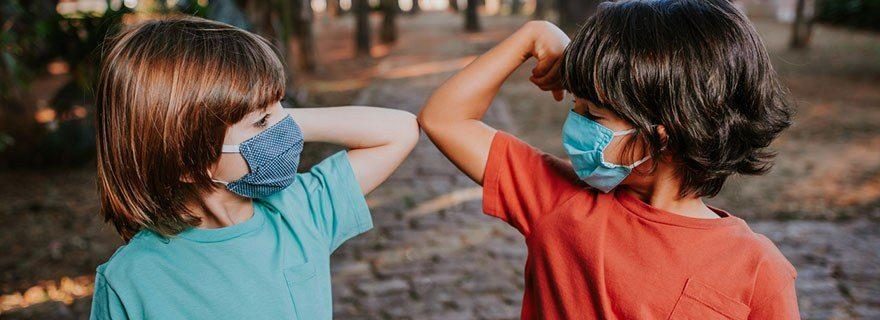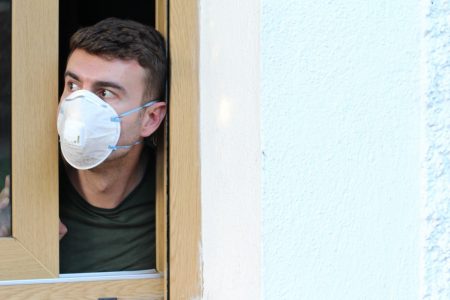Building Resilience in Young People
Effectively supporting young people in coping better with COVID-19 related stress requires detailed understanding of the factors that influence resilient functioning. But what are those factors and what concrete actions can be taken to support young people in building resilience?
Originally published in Dutch on leidenpedagogiekblog
Face-to-face social interactions are critical for mental and physical health (Baumeister & Leary, 1995). The physical distancing measures being enforced around the world to contain the spread of COVID-19 might therefore have serious negative consequences for well-being.
During adolescence, the lack of peer interaction can be particularly distressing as it is a sensitive period for social development during which peer relationships become more and more important (Blakemore & Mills, 2014, Orben, Tomova et al., 2020). This period of life (between 10 and 24 years) is also characterized by a heightened vulnerability to mental health problems. In fact, 75% of adult mental health problems have their onset before the age of 24 (Lee et al., 2014), making adolescence not only a period of great opportunity, but also of considerable risk.
In order to support young people in coping better with current COVID-19 related stress and ultimately protect their mental health it is imperative to understand how to build resilience in this vulnerable age group. Like intelligence, resilience is a concept that probably a lot of people have heard about, but what does it really mean? Often, resilience is described as an innate ability that protects individuals against stress. However, this is not the full story and in this article we are trying to provide more background information on what resilience means, whether and how it can be measured and what it takes to build resilience in young people.
Positive Adaptation after Stress
Previous research has identified a number of so-called risk factors that make young people vulnerable to stress and thereby can make them more susceptible to developing mental health problems. One of those factors is a history of early-life adversity (i.e., childhood abuse and/or neglect; Edwards et al., 2003; Ioannidis et al., 2020). Unfortunately, more than one in three people worldwide are exposed to some form of childhood adversity (Kessler, 2010). However, not all individuals with such stressful experiences move on to develop mental health problems. Those individuals adapt well despite their early-life stressful experiences and can therefore be described as resilient.
Based on these insights, one might wonder why there is no straightforward test that can - figuratively speaking - take someone’s resilience temperature. That way scientists could easily identify individuals at risk of developing mental health problems following early-life adversity to then focus on supporting the most vulnerable. Although such a test would be groundbreaking, research has shown that it is not as straightforward to measure resilience.
Today, science focuses on three central aspects of resilience:
- an individual's capacity to respond well to future stress,
- the actual dynamic process of their response to stress, and
- the outcome in the aftermath of stress (Choi et al., 2019; Kalisch et al., 2017).
Resilience Factors
Contrary to previous beliefs, an individual’s resilience is not static, but rather can change over time. And if provided with the right nutrition it can be strengthened - like a muscle. Resilience researchers call this nutrition, protective or resilience factors. These factors are interlinked and can be found within and outside the human body.
For instance, research from our lab has shown that social support from friends is a particularly important resilience factor in young people (Fritz et al., 2020; Moreno-Lopez et al., 2021; Van Harmelen et al., 2016; Van Harmelen et al., 2021). Supporting the idea that different resilience factors are inextricably intertwined comes from research where we have shown that positive interactions with friends are associated with higher self-esteem and reduced stress responses in the brain, helping young people to be more resilient (Fritz et al., 2018; Van Harmelen et al., 2021).
Moreover, positive interactions have been found to be important for forming new and positive memories that will promote healthy future behavior and expectations and will ultimately improve resilience in vulnerable young people following their negative early-life experiences. Consequently, resilience factors should not be studied in isolation. For example, an individual's genetic profile will likely shape their brain responses to stress, but so will their friendships, family support and more broadly speaking societies and cultures.
Multisystem Resilience
The idea that multiple factors (or systems) influence each other bidirectionally has important implications for understanding resilience. First, it implies that a young person’s ability to respond well to stress relies on external and internal resilience factors that can vary over time within the same person. For example, imagine your best friend moving away to a different city or even country or one of your parents becoming seriously ill, causing immense stress to you. Those life events can happen, but they (hopefully) do not happen on a regular basis.
Second, this complexity science approach (i.e., the idea that complex, interrelated mechanisms facilitate resilient functioning after childhood adversity) suggests that there is no such thing as the ‘resilience gene’ or the ‘resilient personality’, and that there is no single biomarker or lab test that can measure a person's resilience.
Promoting Resilience in Young People
The upside of having multiple factors that influence resilient functioning is that resilience can be boosted by providing young people with the right resources or skills needed to better cope with stress. Hence, there are many concrete actions that can be taken to support young people in building and sustaining resilience, especially during the current pandemic. For example, digital technologies and social media might help maintain friendships online. In addition, journaling or setting up a “feel-good” email folder could boost young people’s ability to remember positive social interactions.
Moreover, families, schools and teachers can also play a critical role. For example, families can model ways to stay in touch with friends (e.g., letter writing or socially distanced outdoor events), they can talk about the value of personal interaction and what it means to care for friendships. Schools could set up virtual after-school “buddy systems” for children to bond and interact as well as implement exercises that teach about strategies for positive peer interactions. In short, the saying ‘it takes a village to raise a child’ also applies to a child’s resilience - a village, with everything it has to offer, may really be the best place to raise a resilient child.
To summarize, resilience is not a static innate ability that you either have or not have. Resilience describes the various facets of the process of responding and adapting well to stress. This process can vary over time and can be improved if supported with the right resources. One important resilience factor that seems to be particularly critical for adolescent well-being - specifically during the current COVID-19 crisis - is social support from friends. Therefore, make sure to reach out to your friend today - regardless if you are younger or older than 24 years - and tell them what you have learned about resilience and why they are so important for your mental and physical well-being.






